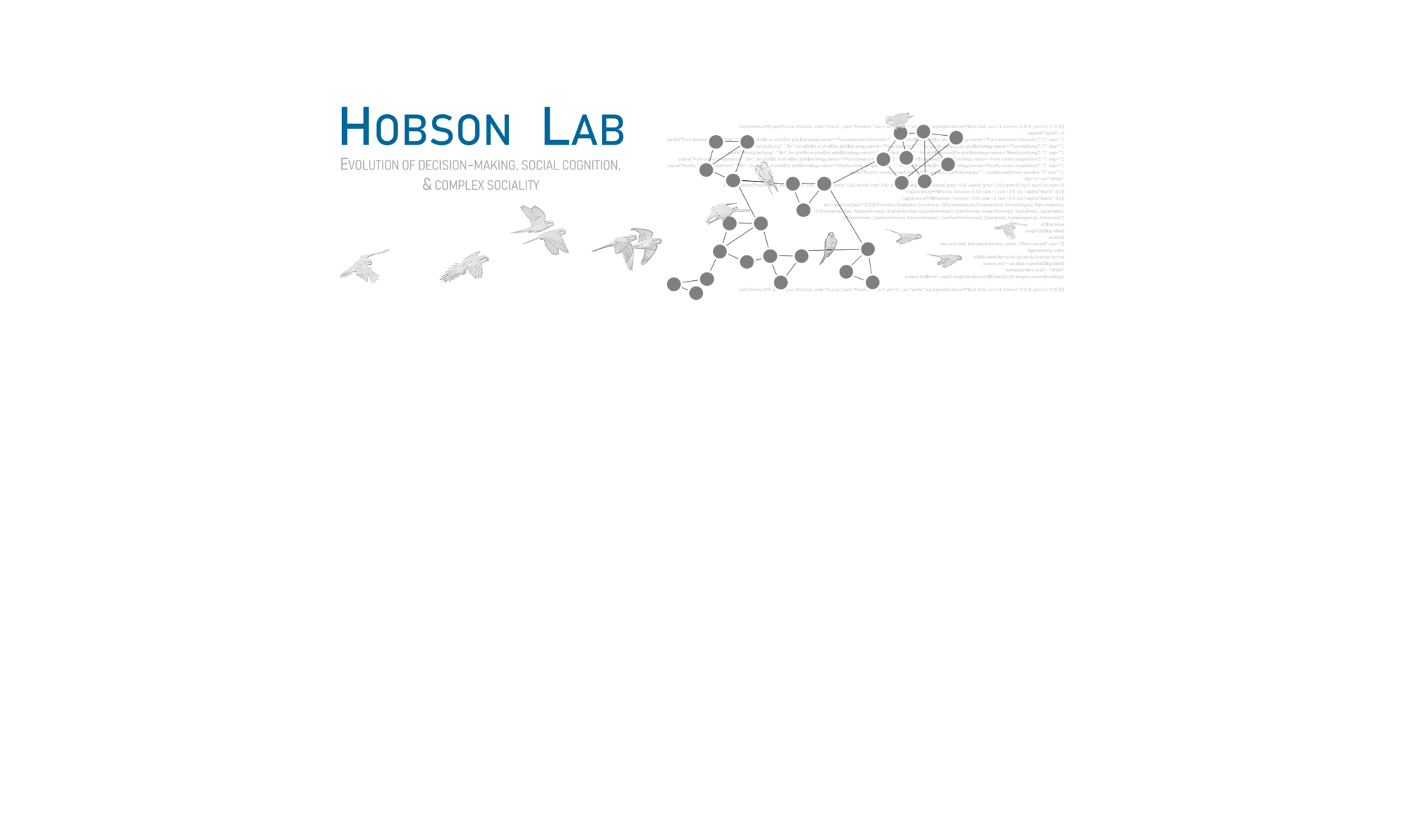I posted an update to my paper on aggression heuristics, written with Dan Mønster and Simon DeDeo. The preprint is available on arXiv here.
Aggression heuristics underlie animal dominance hierarchies and provide evidence of group-level social information
Members of a social species need to make appropriate decisions about who, how, and when to interact with others in their group. However, it has been difficult for researchers to detect the inputs to these decisions and, in particular, how much information individuals actually have about their social context. We present a new method that can serve as a social assay to quantify how patterns of aggression depend upon information about the ranks of individuals within social dominance hierarchies. Applied to existing data on aggression in 172 social groups across 85 species in 23 orders, it reveals three main patterns of rank-dependent social dominance: the downward heuristic (aggress uniformly against lower-ranked opponents), close competitors (aggress against opponents ranked slightly below self), and bullying (aggress against opponents ranked much lower than self). The majority of the groups (133 groups, 77%) follow a downward heuristic, but a significant minority (38 groups, 22%) show more complex social dominance patterns (close competitors or bullying) consistent with higher levels of social information use. These patterns are not phylogenetically constrained and different groups within the same species can use different patterns, suggesting that heuristics use may depend on context and the structuring of aggression by social information should not be considered a fixed characteristic of a species. Our approach provides new opportunities to study the use of social information within and across species and the evolution of social complexity and cognition.





